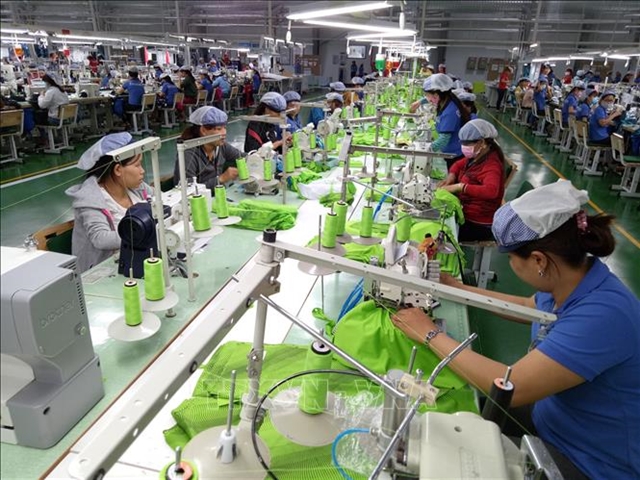 Economy
Economy


|
| Workers at an apparel factory in Bắc Đồng Phú Industrial Zone in southern Bình Thuận Province. Textile and garment has been identified as a key industry to drive growth in Việt Nam's industrial sector in the future. — VNA Photo |
HÀ NỘI — In spite of strong growth over the last decade, Việt Nam’s industrial sector must start investing in R&D, finding ways to improve manufacturing efficiency and transforming into one capable of producing high-value-added products.
These were recommendations, among others, made in the Vietnam Industry Whitepaper 2019, which was released, for the first time, yesterday in Hà Nội by the Ministry of Industry and Trade (MOIT). The paper is the result of a co-operation project between the ministry and the United Nations Industrial Development Organisation (UNIDO) with support from the South Korean government.
“Việt Nam’s manufacturing and processing industries have played an important part in economic development, contributing up to 80 per cent of the country’s export value per year and created millions of jobs,” said MOIT’s deputy minister Đỗ Thắng Hải.
Việt Nam’s impressive industrial growth has seen the country moving up the Competitive Industrial Performance Index (CIPI) to 6th place among the ten ASEAN economies during the 2006-16 period, according to a UNIDO’s CIPI released in May. The country is also projected to become one of the most competitive countries as manufacturing bases, ranking 12 among the top 25, by 2020.
This is in line with recently issued Resolution No.23-NQ/TW by the Party’s Central Committee on the country’s industrial development by 2030 with a vision to 2045, which defines a set of objectives to increase the share of GDP of industry and manufacturing value to at least 45 per cent, the growth rate for industrial value added to 8.5 per cent and for manufacturing industries 10 per cent annually.
“This paper provides policymakers, researchers and businesses with essential information on Việt Nam’s industries and helps produce accurate analysis and sound policies.”
It advised the country to focus on the development of industries such as food processing, textile and garment, leather and footwear, electronics and vehicles in the pursuit of mentioned-above objectives.
Việt Nam has great potential for growth thanks to its geological advantages, political stability and young population. The country can serve as a manufacturing hub in the global economy as well as a major consumer market with an expanding population of 96 million, said UNIDO country representative Lê Thị Thanh Thảo.
Việt Nam’s manufacturing value added (MVA), a key indicator to measure a country’s industrialisation level, however, remains low even in comparison to that of ASEAN countries. While showing impressive growth by increasing from US$15.15 billion in 2006 to US$26.61 in 2016, the country’s share of MVA in GDP remains under 20 per cent, whereas such a figure is usually over 20 per cent in advanced industrialised economies. This is a hurdle that must be overcome if Việt Nam is to meet objectives in developing its industrial sector. — VNS




